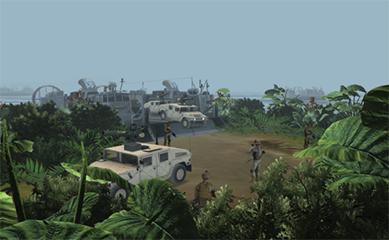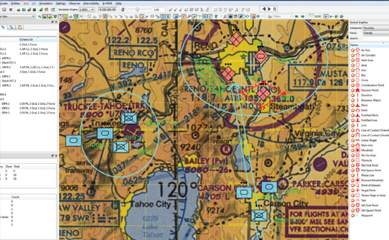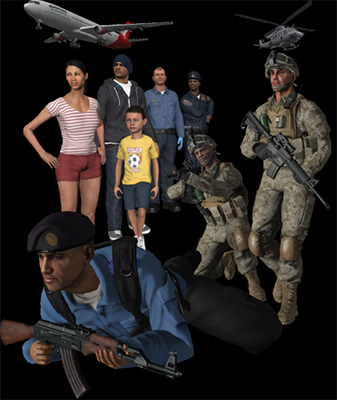|
| |
| |
|
1. What makes your CGF powerful? |
| |
| |
|
|
Here are VT MÄK's top 5 ways to empower your simulation scenario
|


|
| |
The size, complexity, and richness of your simulation scenario is typically a function of how much work it takes to set up and the computing power it takes to run at the desired fidelity.
Here are MÄK's top 5 ways to empower your scenario with VR-Forces.
1. Give your entities brains
Scripting is great when you want to precisely define what individual entities are doing. But in general, the more intelligence you can give an entity, the less scripting you have to do to define its role in the scenario. Use Lua scripting in VR-Forces to assign behaviors to entities and give them an additional layer of intelligence; this intelligence will provide behaviors that they’ll use when they need to react to situations in the scenario.
2. Let one entity do the thinking for many
A simple example of this is embarkation. Imagine human character entities “embarking” in a vehicle; once inside the car, the humans can stop thinking about how to get around in the simulated world because the vehicle will do that for them. When the vehicle arrives at some destination, the human characters disembark and re-engage their brains to react to the circumstances at their destination.
3. Give your entities the ability to deploy other entities
Your simulation scenario may require a ship that is capable of deploying a helicopter. With VR-Forces, simply embed the helicopter in the ship; the ships' plan can include deploying these helicopters when needed. The helicopter won't exist in the simulation until the ship deploys it. Once deployed, the helicopter becomes a first class entity in the simulation with a plan of its own, to drop sonobuoys or launch missiles, etc. When the helicopter finishes its mission and returns to the ship, it becomes embedded again and no longer consumes simulation resources.
4. Simplify your planning by giving orders to aggregates
Another way to get a lot of work done with only a little bit of instruction is to aggregate entities. Give instructions to the aggregates and the instructions will be carried out by all the entities associated, allowing you to create large numbers of entities in a simulation quickly. With the placement of a few aggregates, each with a specific task, you'll have created dozens of individual entities that will carry out the tasks of those aggregates.
5. Use aggregate-level simulation.
Numbers 1-4 are entity-level simulation tips; if you work more at the command staff level, use aggregate-level simulation
Do more with less by taking advantage of VR-Forces' productivity-enhancing
capabilities. Find attached the datasheet of VR-Forces for more information.
|
| |
|
2. DI-Guy 13 Sneak Peek |
|
An even better DI-Guy is just around the corner.
|
| |

|
Here are a few things to look forward to:
- Fill large-scale simulations with thousands of characters
DI-Guy's advanced instancing system provides a 2.5x speed increase for large crowds at low levels of detail. Fill up your large-scale scenarios with thousands of
characters, instead of just hundreds!
- Animate your characters with multi-directional movement Characters can blend multiple motions together and move in any direction at any speed, while aiming and shooting.
- More character content Enjoy 30 new and updated characters, including opposing force appearances for different world regions and new children and civilian appearances.
- Real-time Inverse Kinematics (IK) system This is a new system for keeping characters’ legs and hands attached to the ground and other objects in real-time.
|
| |
|
| |
|